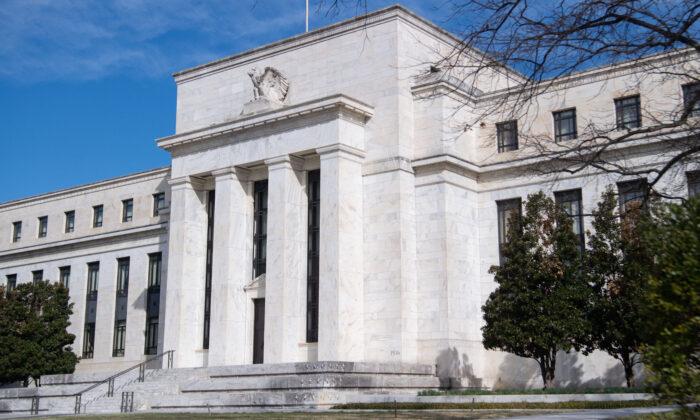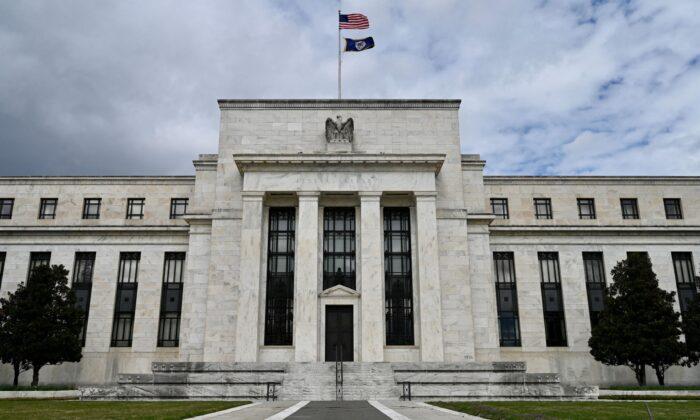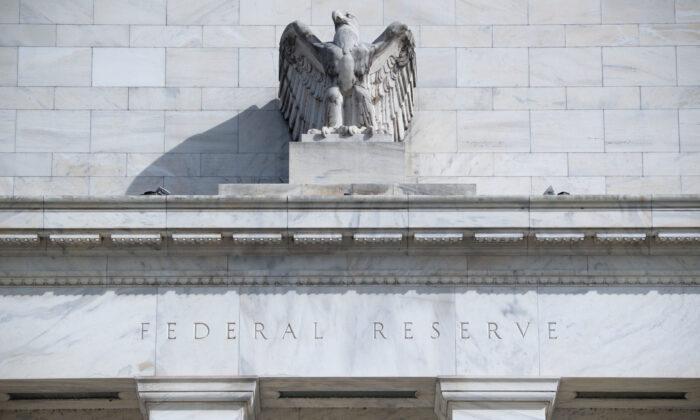Despite the largest bull market in history, 80 percent of Americans struggle with their finances and are unprepared for retirement. Such a reality is a stark difference from the belief that rising asset prices benefit the masses.
“Our July 2021 updated analysis revealed that most older Americans have made little to no progress toward financial security. As in 2016, our analysis of 2018 data finds that 80%—or 47 million households with older adults—are financially struggling today or are at risk of falling into economic insecurity as they age. Between 2016 and 2018, any increases in the net value of wealth occur to a greater extent for those with the most wealth. Moreover, this trend is worsening over time, as 90% of older households experienced decreases in income and the net value of wealth between 2014 and 2016.”
Interestingly, these surveys come after the government injected nearly $5 trillion into the economy and the Fed’s $120 billion monthly injections doubled asset prices from the March 2020 lows.
Stark Inequality
In 2021, Fidelity published its latest analysis showing that a record number of retirement accounts achieved more than $1 million balances. To wit:“The number of 401(k) accounts with balances of at least $1 million at Fidelity Investments grew 84% year over year to 412,000. Fidelity said that the number of seven-figure IRAs jumped more than 64% 341,600 in the 12 months that ended in the second quarter. Together, the number of accounts with $1 million or more grew 74.5%—though it isn’t clear how many individuals that represents, because people can have multiple accounts,” said Bloomberg.
While the “number of retirement millionaires” made headlines, an essential piece of the analysis got overlooked.
Those 412,000 accounts make up only a tiny fraction of Fidelity’s 27.2 million retirement accounts.
How small of a fraction? About 1.6 percent, which aligns with the top 1 percent of equity ownership in America.
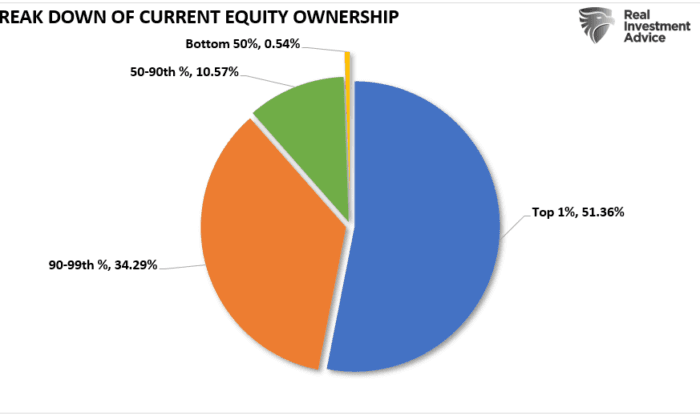
The Bottom 98 Percent Have a Different View
The future is not so optimistic for the other 98 percent of retirement account holders. According to Motley Fool:- The average retirement account savings for American households is $65,000.
- The average American under 35 has $13,000 saved for retirement.
- 62 percent of Americans aged 18 to 29 have some retirement savings, but only 28 percent feel on track for retirement.
- 55 percent of non-retirees have a 401(k) or 403(b), while 25 percent have no retirement savings.
- Americans with a high school degree have an average retirement savings account value of $20,000, while those with a college degree have an average account value of $119,000.
- The average retirement savings of white Americans was roughly $45,000 more than that of black and Hispanic Americans.
- Retirement savings for households in the bottom 25 percent of net worth grew by $2,710 from 1989 to 2019. Savings for the top 10 percent of net worth increased by over $600,000 during that same period.
- 51 percent of Americans retire at 61 or earlier, and 23 percent retire between 62 and 64 before Medicare coverage kicks in at 65. White Americans tend to retire later than black or Hispanic Americans, despite having more savings.
“One in 4 Americans have no retirement savings, and those who are saving aren’t saving enough. Those that are [saving], on average, what they have saved will afford them like $1,000 a month of actual cash while they’re in retirement.”
The report found that the median retirement account balance for 55-to-64-year-olds is $120,000. When divided over 15 years, that would generate a modest distribution of less than $1,000 per month. The bigger problem is the large percentages of individuals with no retirement savings.
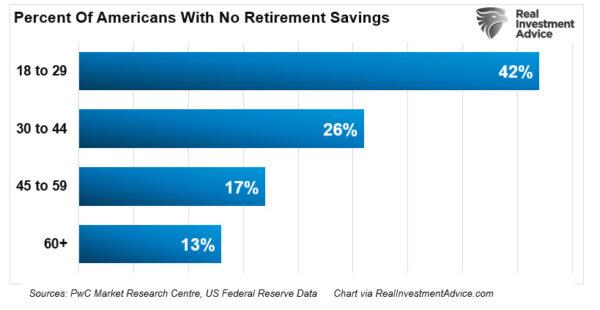
Hard to Save When Income Doesn’t Cover the Bills
There are three primary reasons why individuals fail to save money for retirement:- Lack of knowledge about budgeting and saving. (15 percent)
- Cost of living exceeds incomes. (70 percent)
- Bad previous investing experience (bear market). (15 percent)
The biggest reason, not surprisingly, is the lack of capital to invest.
To save and invest, one must have disposable income that exceeds their cost of living.
While much of the mainstream analysis utilizes “averages,” the message gets distorted when the data set becomes skewed. Such is particularly the case with disposable incomes (DPI). The calculation of DPI (income minus taxes) is a guess due to the variability of household income and individual tax rates.
More importantly, the measure gets skewed by the top 20 percent of income earners, notably the top 5 percent. The chart below shows those in the top 20 percent saw substantially more significant median wage growth versus the bottom 80 percent. (Note: all data used below is from the Census Bureau and the IRS.)
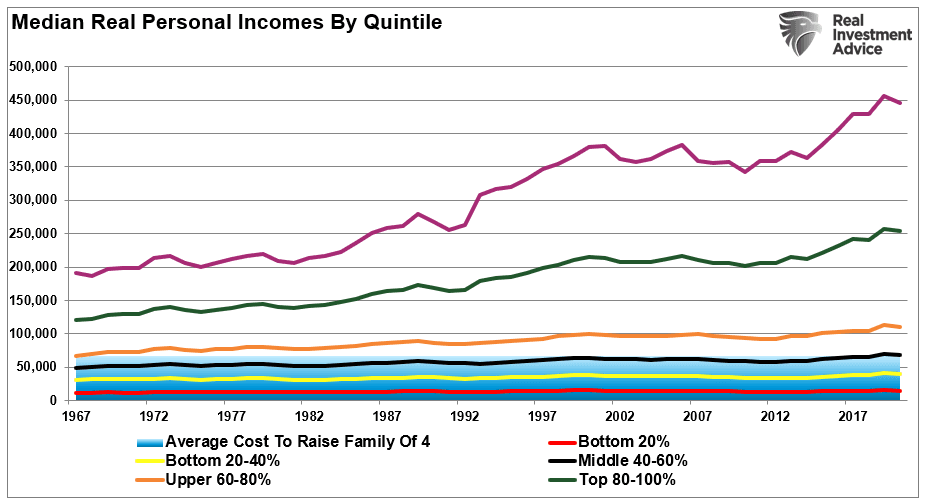
Furthermore, disposable and discretionary incomes are two very different animals.
Discretionary income is the remainder of disposable income after paying for all mandatory spending like rent, food, utilities, health care premiums, insurance, etc. For the bottom 80 percent of income earners, the cost of living outstrips a vast majority of those individuals (shaded area).
In other words, given the bulk of the wage gains are in the upper 20 percent, any data that reports an “average” is overstating reality. Such is why a vast difference between the debt service levels (per household) exists between the bottom 80 percent and the top 20 percent.
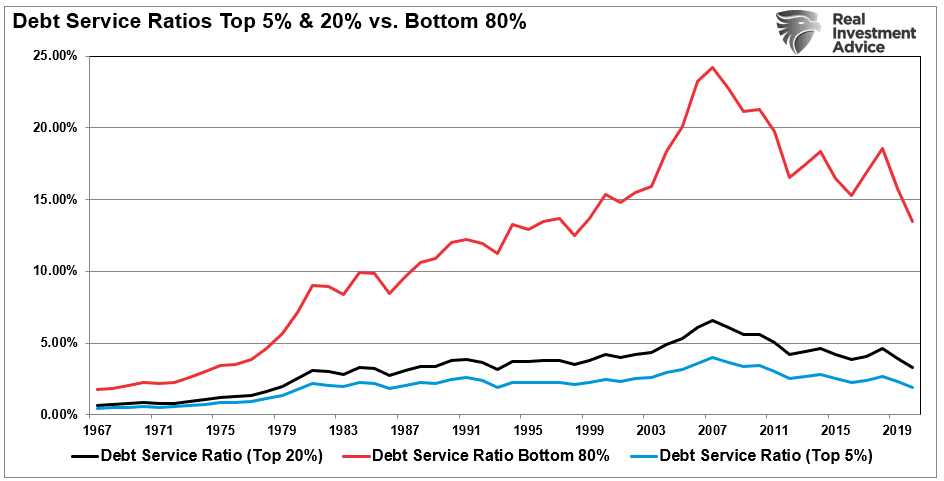
No Money, but I Got Credit
As noted above, sluggish wage growth has failed to keep up with the cost of living, forcing an entire generation into debt to make ends meet. While savings spiked during the COVID-19 crisis, the rising cost of living for the bottom 80 percent has outpaced the median “disposable income” level for that same group. As a consequence, the inability to “save” has continued.The “gap” between the “standard of living” and real disposable incomes gets shown below. In 1990, incomes alone were no longer able to meet the standard of living. Such forced consumers into debt to fill the “gap.” Currently, a $3,600 annual deficit must get filled by debt.
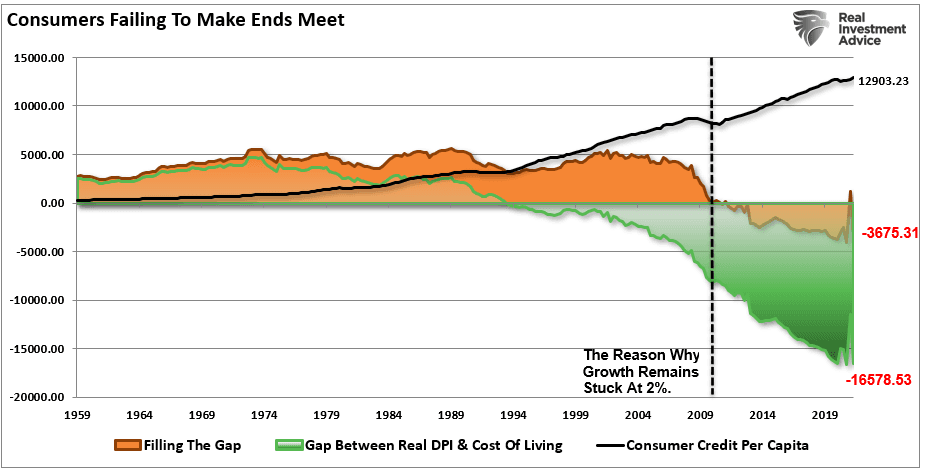
Such is why we continue to see consumer credit hitting records despite an economic boom, rising wage growth, historically low unemployment rates.
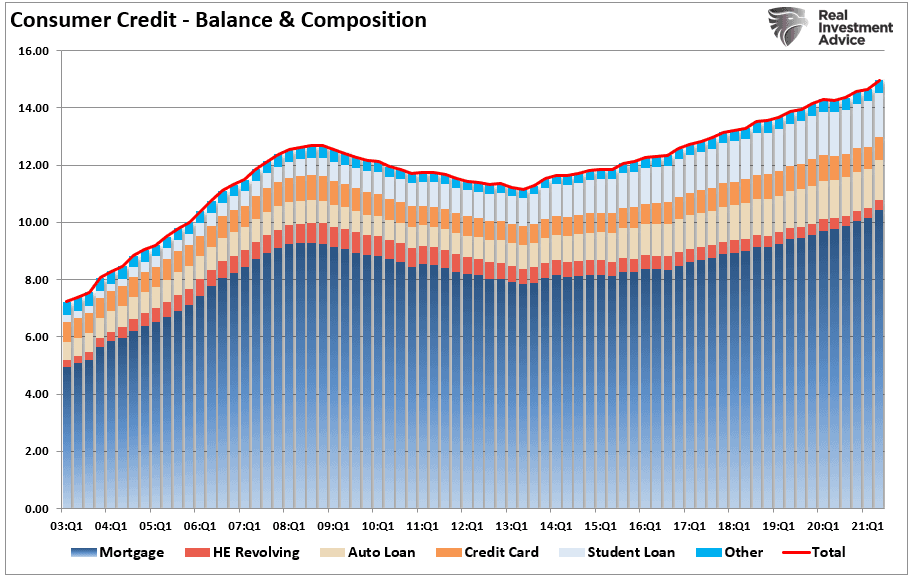
Conclusion
While the media tells you to invest in the financial markets to build wealth, that game has benefitted Wall Street far more than the average American.Four decades of bad policy from Washington, starting with the deregulation of the financial industry under Ronald Reagan, undermined the average household.
Of course, it is hard to save money and invest when credit card debt is the only backstop between paying bills and feeding the family.


